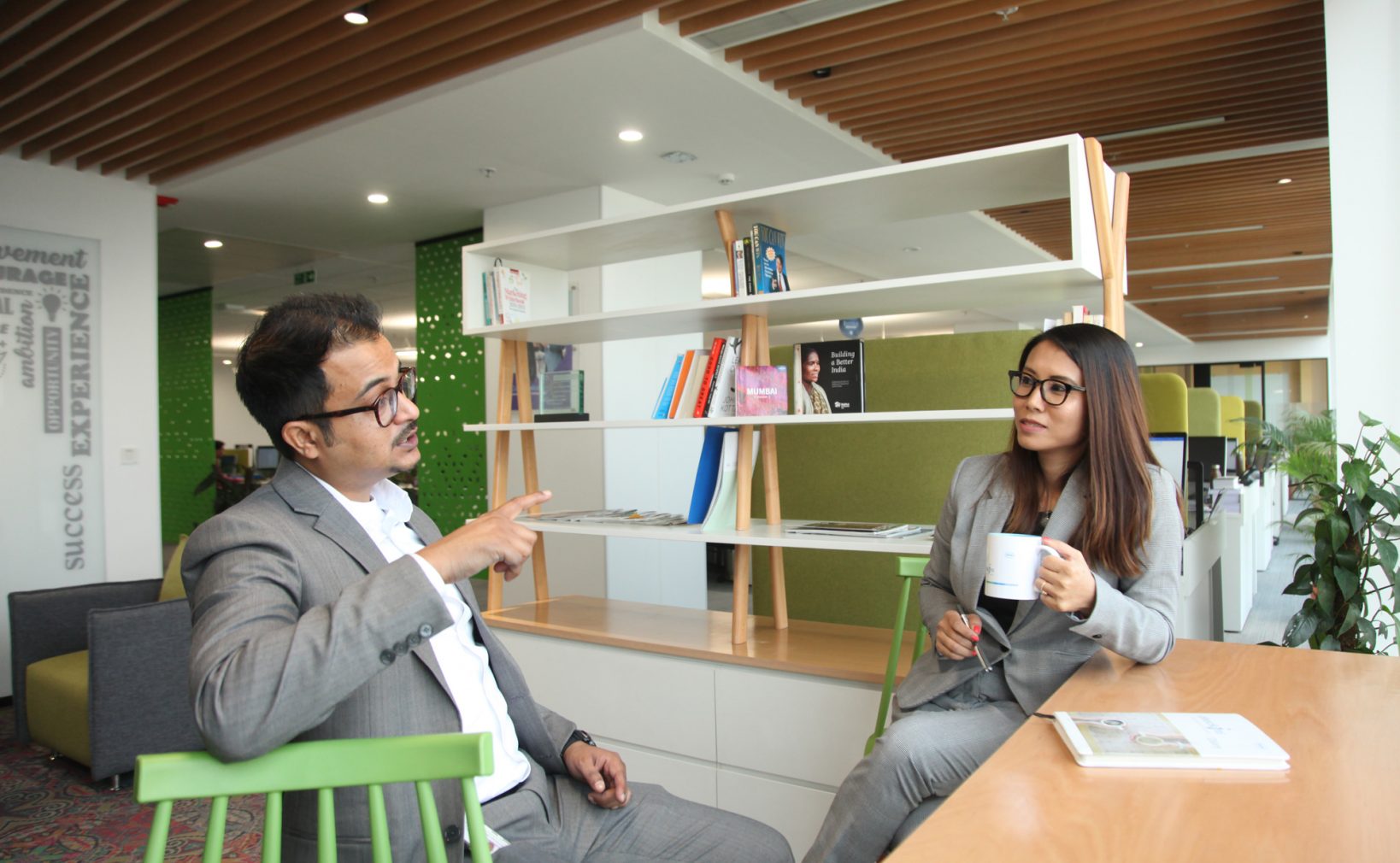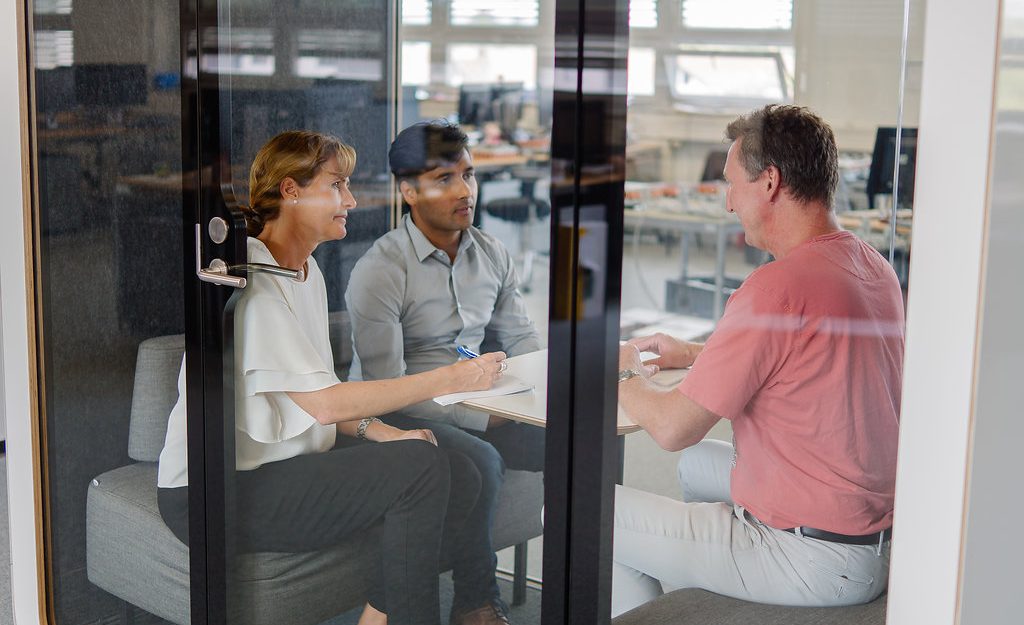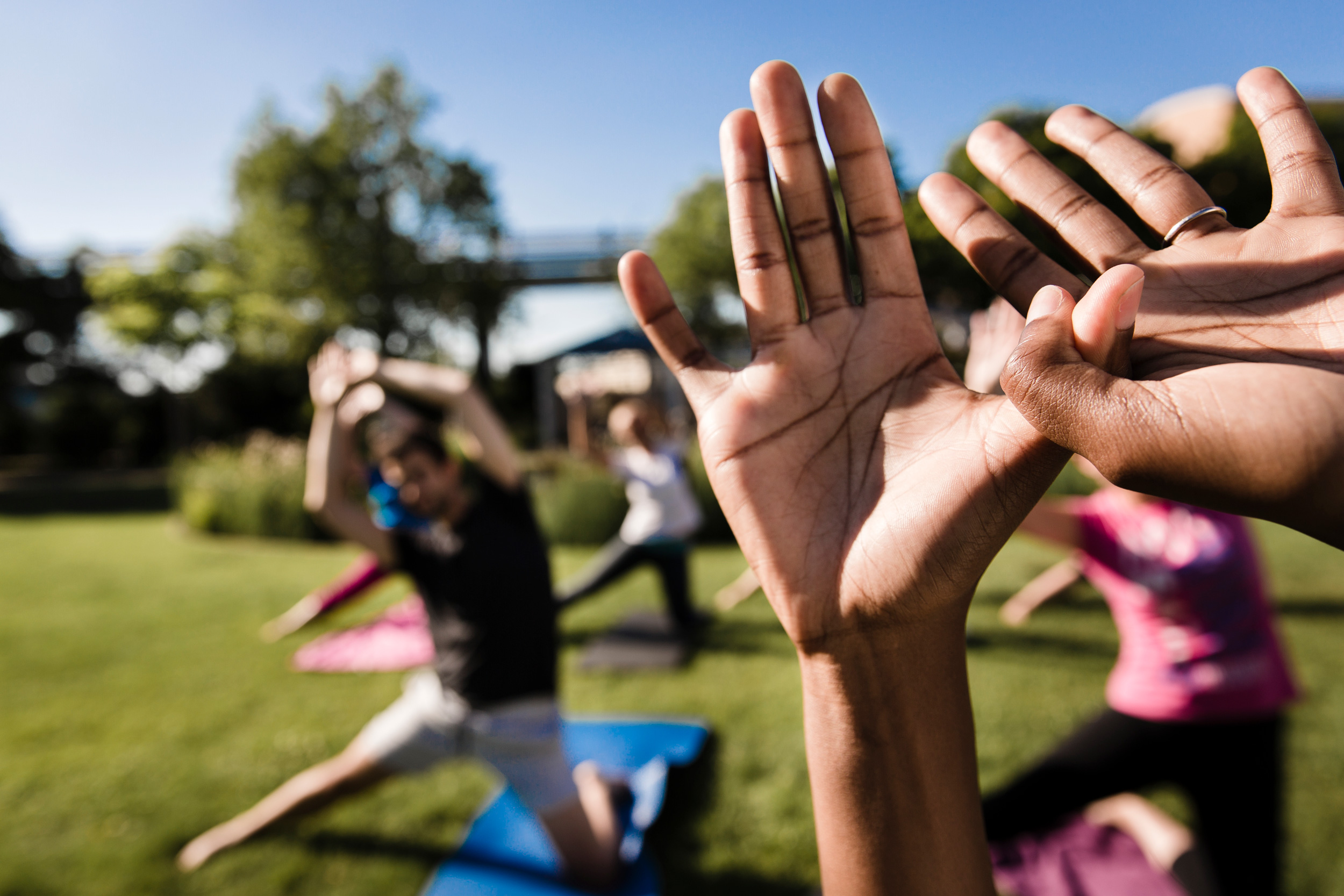
Diverse and inclusive
Design must be understanding of people differences to foster a sense of community.
Down“Design helps people personalise their workplaces, feel a sense of belonging, and feel comfortable, thereby reducing everyday frustration and effort, and hence increasing mental well-being and productivity”Dr. Pragya Agarwal – Creative Strategist
Design with people in mind
An inclusive workplace values individual differences and makes people feel welcome and accepted without placing undue focus on anyone. It fosters an equitable and respectful environment and, consequently, a more innovative, sensitive, and productive organisation.
Fostering a variety of ideas, generations, cultures, and workstyles by providing welcoming gathering areas and opportunities for interaction, builds a welcoming environment where everyone feels part of. Consider:
- The office layout should support social activities like making tea, gathering, and having a casual conversation.
- The organization of workplaces in neighbourhoods promotes group cohesion.
- Offer different design solutions to adapt to different workstyles for individual concentration work
- Permeable screens strategically placed are a subtle way of zoning and provide some enclosure within the open work area.
- Propose common space / furniture solutions that allow customization or reorganization of space.
- Communication walls and team displays are effective strategies for fostering team bonding.
Inclusive workplaces are…
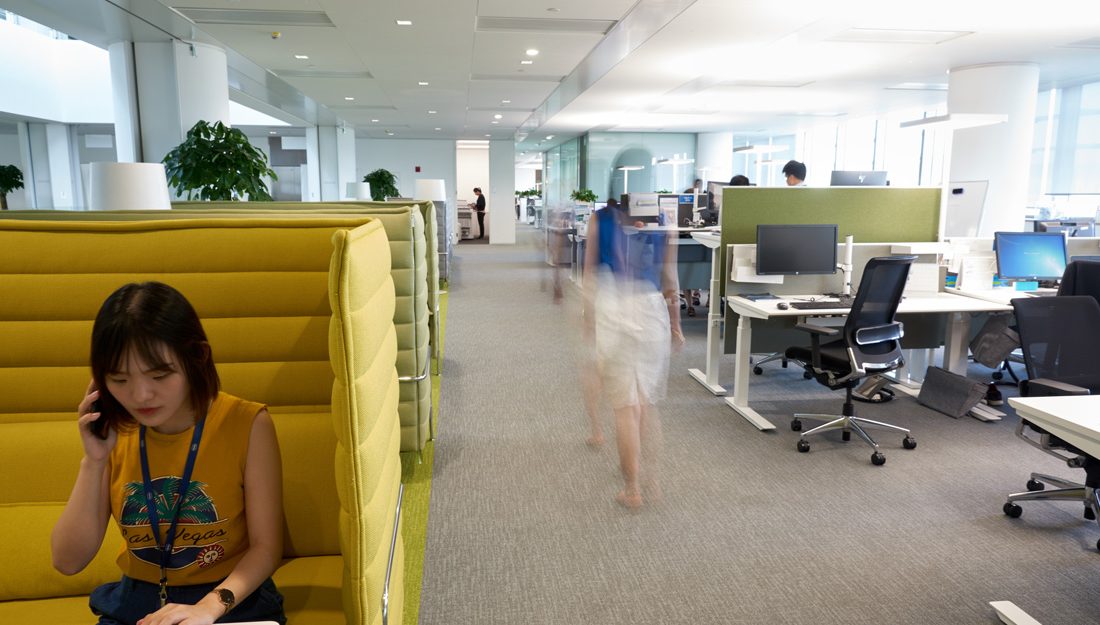
Functional
- Each activity area needs to be adequate for its use and well-being requirements. For instance, design a space with good proximity to appropriate sunlight and including adequate furniture and technology.
- A clean line of sight to important elements needs to be established from a seated or standing position.
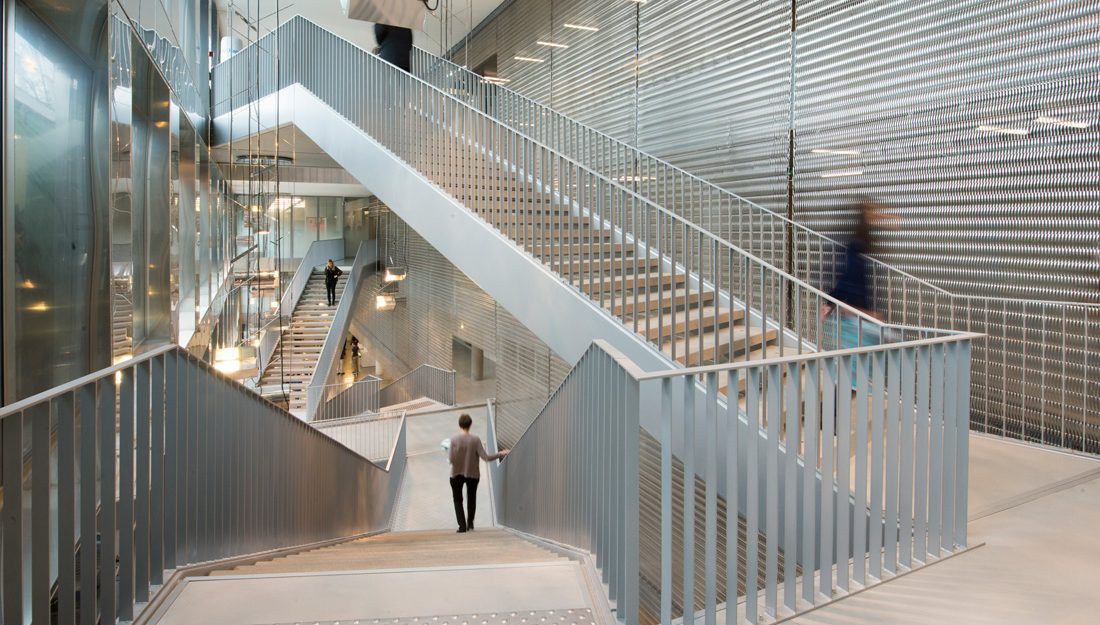
Dynamic
- Circulation across the workplace is improved by removing obstacles and choosing smooth, non-slippery floors, without any projection interrupting its continuity.
- Healthy habits, like changing positions or walking within the office, can be encouraged by, for example, locating centralised coffee points.
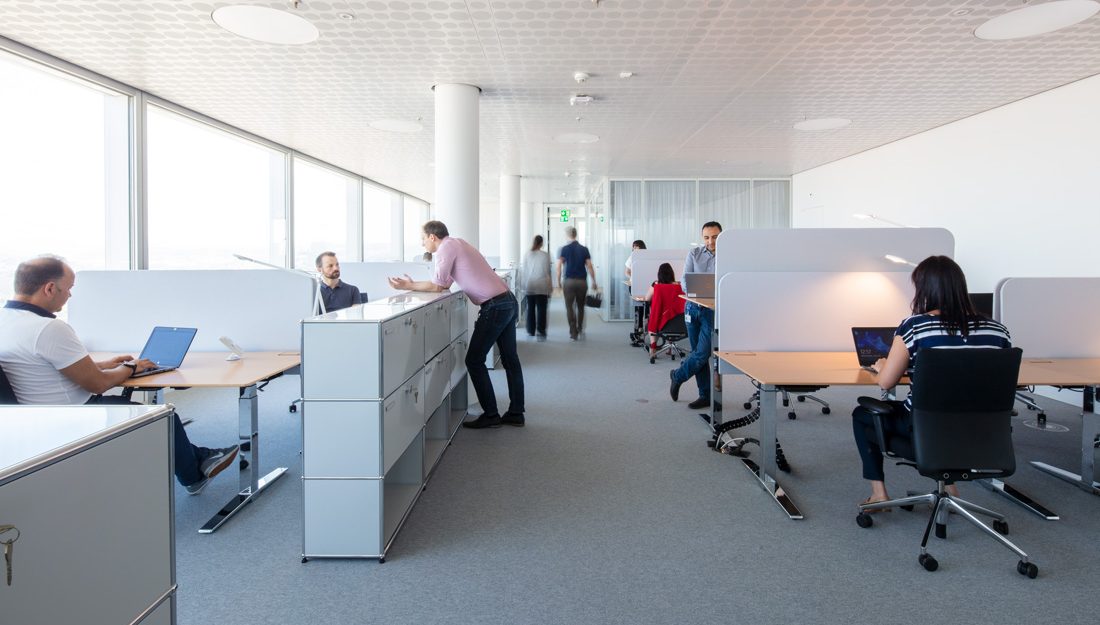
Equitable
- There must be an equal emphasis on different styles of working. Consider also that some users might be sensitive to noise, light, or air pollutants. Offer choice, as a single design solution cannot accommodate all users.
- Planning spaces of different sizes and levels of privacy provides alternatives for working.
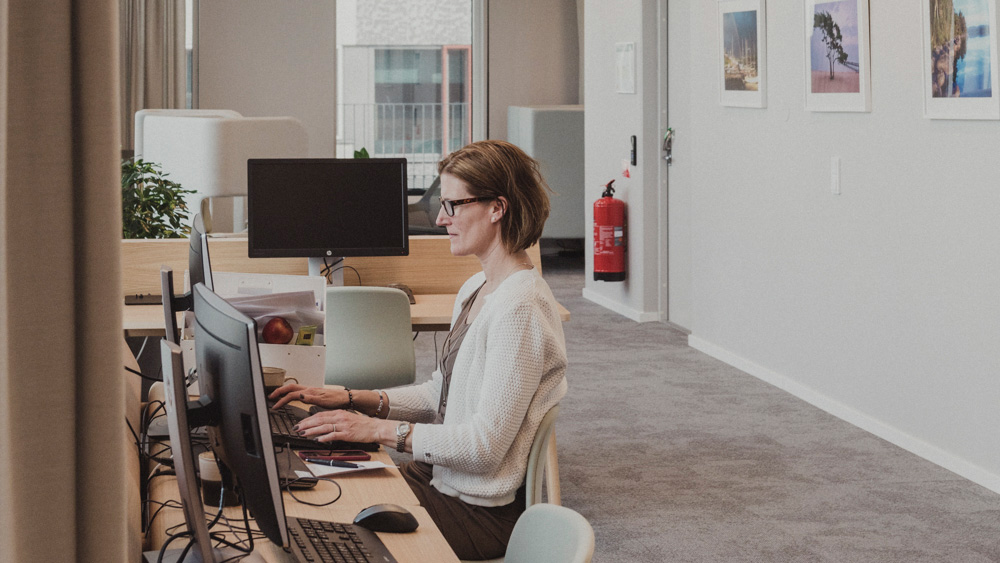
Comfortable
- An ergonomic working environment means fitting the workplace to the worker, not the worker to the workplace.
- Physical comfort (thermal, postural, sound), furniture design (adequate chairs, standing desks), appropriate lighting (natural, task light), and allowing for the avoidance of repetitive tasks all increase user well-being.
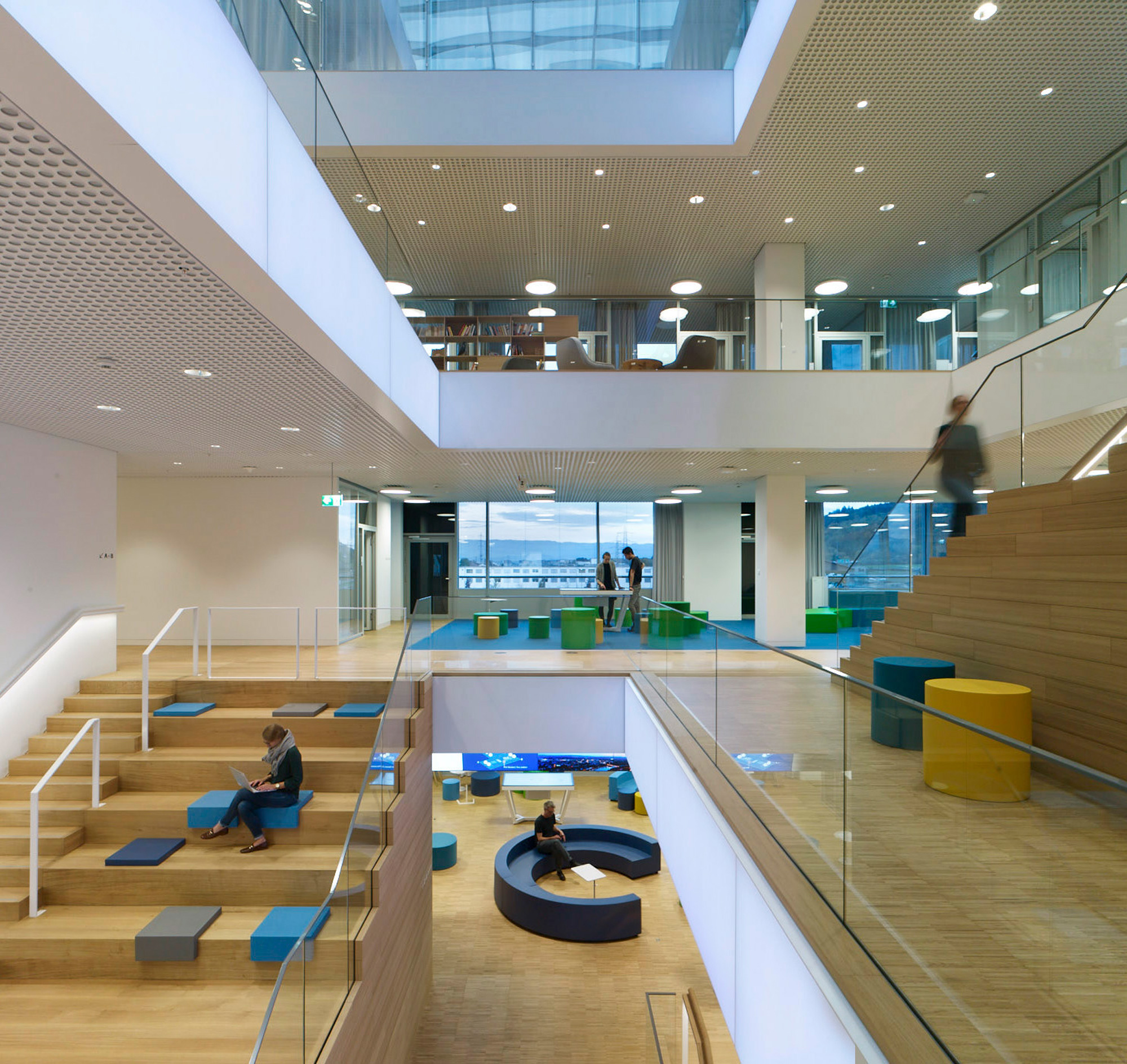
Accommodating
- Include amenities that support social and local cultural activities strengthens community.
- Facilities that promote healthy habits, such as relaxation areas, gym, showers, or bicycle parking supports well-being.
Key to Diverse and inclusive
- An inclusive workplace values individual differences and supports diverse ways of working.
- The office layout should encourage social activities to foster the sense of community.
- Foment well-being by offering choices, comfortable furniture, adequate lighting and support for sport activities.

